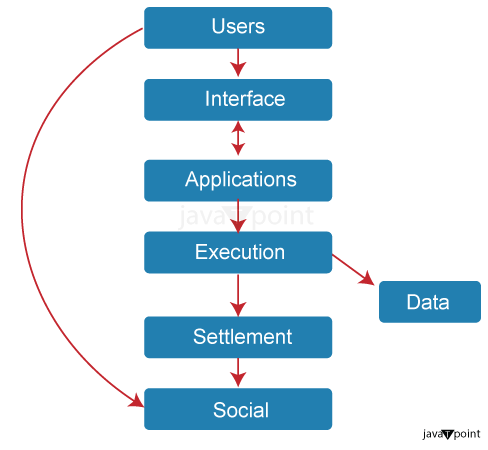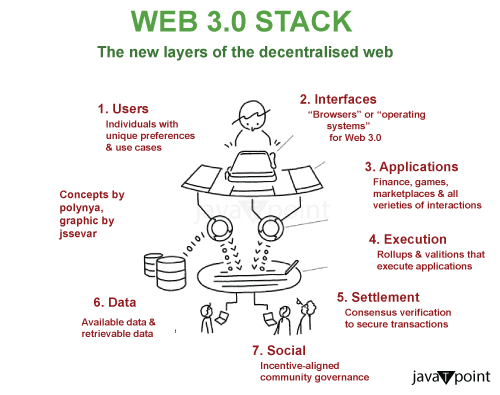The Web3 Stack- Why Web3 has better UX than Web2?Web3, the latest buzzword within the tech enterprise, is often defined as a trustless, permissionless, decentralized internet that leverages blockchain era. It's a brand-new internet era where customers completely very own their content material, statistics, and property through blockchains. This shift from Web2 is a technological transition and a well-known user experience (UX) shift. Understanding the Web3 StackThe Web3 stack is still emerging and fragmented, but with much innovation over the years, it's beginning to come into focus. Let's break down the Web3 stack from the bottom up:
Web3 UX: A Standard ShiftWeb3 promises a better UX than Web2 in several ways:
While the transition to Web3 is promising, it's no longer without demanding situations. Scalability, privacy, and user-friendly interfaces are still being laboured on. However, with the pace of innovation in the area, it's most effective a depend on time earlier than those challenges are triumph over, paving the manner for a more person-centric internet. 
UsersUnderstanding the intricacies of Web3 might probably appear complicated, even in its simplified form. However, quit customers will simplest be concerned with programs and interfaces, much like how Web2 works. Web3 will offer diverse interfaces for customers to select out from. Social healing smart settlement wallets like Argent might be the favoured account management technique. InterfaceWeb3 will offer a range of interfaces for users to choose from. Social recovery smart contract wallets like Argent will be the preferred solution for managing accounts and digital assets due to their superior user experience. These wallets will function like browsers and app stores, allowing users to find and use applications. Technical details such as fees and blockchains will be abstracted from the user, making the experience seamless. A "Simple Mode" will allow users to complete use cases without selecting applications. Web2-like scenarios, such as depositing fiat to play Sorare's fantasy sports game, will also be available. With account abstraction, seamless bridging, pooling, social recovery, and validity rollups, web3 has the building blocks for elegant UX. The competition will be intense to deliver the best UX. ApplicationsFor users to embrace web3, they need to be provided with better user experiences than web2, previously impossible experiences without web3. This is where the importance of innovations by application developers comes in. I believe that up until now, the industry has been too fixated on blockchains and tokens. With time, all the activity, capital, and innovation will shift towards applications. ExecutionBlockchain applications are executed on different layers, interacting directly with the interface. Rollups and volitions are expected to be the primary execution layers, but there could also be centralized hybrid and sovereign monolithic chains. Volition setup allows for a hybrid scenario. For instance, Facebook's Libra/Diem project faced regulatory issues because of the data liability problem, whereas Worldcoin and Reddit opted for building rollups with zero data liability. Recent developments reveal that Meta is building its execution layers. However, they are unlikely to develop a rollup. Instead, they might create a hybrid volition that leverages a centralized database and a public settlement/DA layer to achieve interoperability and limit data liability. The blockchain world offers many possibilities, with modular blockchains and blockchain Legos allowing for various combinations of execution layers. SettlementThe execution layers will settle the security, consensus, or settlement issues in the blockchain world. People talk more about this layer than anything else, but as web3 gains mass adoption, the security layer will become less prominent. Nevertheless, this layer is critical for providing security and anchoring the economy with a sound monetary asset. While the fat protocol thesis still applies, I anticipate the application layer will capture more value as we achieve a global scale. DataWeb3 execution layers require two types of data: available data with data availability guarantees and retrievable data with retrievability guarantees. Important transactions are stored on DA layers, while low-value data can be retrieved from non-DA layers such as Filecoin, Arweave, and Swarm. SocialAt every step, vibrant community-governed ecosystems will exist, creating social layers that give the settlement layer value and build the entire web3 infrastructure. 
The Future of Web3The future of Web3 is promising but unsure. It's a swiftly evolving space with new protocols, structures, and programs being advanced daily. However, one element is apparent: Web3 is ready to revolutionize the internet and the digital global as we know it. While Web3 offers many blessings over Web2, it's vital to word that it's nevertheless in its early degrees. Many technical demanding situations exist, which includes scalability, privacy, and security. Additionally, for Web3 to reach its complete capacity, it's going to require extensive adoption and regulatory recognition. The Role of BlockchainBlockchain era is the spine of Web3. It gives a obvious, stable, immutable ledger that allows trustless interactions. Smart contracts, that are self-executing contracts with the terms of the agreement without delay written into code, are a critical innovation on this area.
Next TopicWhat is Web3 Stack?
|
 For Videos Join Our Youtube Channel: Join Now
For Videos Join Our Youtube Channel: Join Now
Feedback
- Send your Feedback to [email protected]
Help Others, Please Share









